2,3,4-TRIMETHYLPENTANE
- CAS NO.:565-75-3
- Empirical Formula: C8H18
- Molecular Weight: 114.23
- MDL number: MFCD00008924
- EINECS: 209-292-6
- SAFETY DATA SHEET (SDS)
- Update Date: 2025-01-27 09:38:02
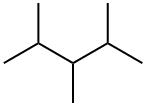
What is 2,3,4-TRIMETHYLPENTANE?
Chemical properties
Clear, colorless, flammable, watery liquid with a mild aliphatic hydrocarbon odor resembling hexane.
The Uses of 2,3,4-TRIMETHYLPENTANE
2,3,4-Trimethylpentane (2,3,4- tmp) is an isomeric compound of octane with an EC50 of 16.3 mM for 2,3,4- tmp.It can be used for its infrared spectroscopic studies and for biological activity studies such as the urinary metabolites of the potent nephrotoxic hydrocarbons 2,3,4- tmp in Fischer-344 male rats by gavage. Study. In addition, exposure of rat renal proximal tubules to 2,3,4-tmp resulted in structural changes that caused increased mitochondrial swelling, increased vesiculation, decreased microvilli and nuclear shrinkage[1-3].
Definition
ChEBI: 2,3,4-trimethylpentane is an alkane that is pentane substituted by a methyl group at positions 2,3 and 4. It is a constituent of gasoline. It has a role as a mammalian metabolite and a nephrotoxic agent. It is an alkane and a volatile organic compound.
General Description
Kinetics and mechanism of reaction of OH radicals with 2,3,4-trimethylpentane in the presence of NO has been investigated. Kinetics of reactions of C6H5 radical with 2,3,4-trimethylpentane has been measured by cavity ringdown spectrometry.
Source
Schauer et al. (1999) reported 2,3,4-trimethylpentane in a diesel-powered medium-duty
truck exhaust at an emission rate of 310 μg/km.
California Phase II reformulated gasoline contained 2,3,4-trimethylpentane at a concentration of
13.0 g/kg. Gas-phase tailpipe emission rates from gasoline-powered automobiles with and without
catalytic converters were 2.51 and 412 mg/km, respectively (Schauer et al., 2002).
Environmental Fate
Photolytic. Atkinson (1990) reported a rate constant of 7.0 x 10-12 cm3/molecule?sec for the
reaction of 2,3,4-trimethylpentane and OH radicals in the atmosphere at 298 K. Based on this
reaction rate constant, the estimated lifetime is 20 h (Altshuller, 1991).
Chemical/Physical. Complete combustion in air produces carbon dioxide and water vapor.
2,3,4-Trimethylpentane will not hydrolyze because it does not contain a hydrolyzable functional
group.
References
[1] G.A. CROWDER; Lorelei G. Vibrational analysis of 2,3,4-trimethylpentane and 2,3,4-trimethylhexane[J]. Journal of Molecular Structure, 1984. DOI:10.1016/0022-2860(84)85188-1.
[2] CARL T. OLSON . The metabolism of 2,3,4-trimethylpentane in male fischer-344 rats[J]. Toxicology letters, 1987. DOI:10.1016/0378-4274(87)90132-9.
[3] N.J. DELRASO; C. S G; D R Mattie. Lack of detectable metabolism for solubilized 2,3,4-trimethylpentane by rat kidney proximal tubules[J]. Toxicology letters, 1990. DOI:10.1016/0378-4274(90)90201-V.
Properties of 2,3,4-TRIMETHYLPENTANE
| Melting point: | -110 °C (lit.) |
| Boiling point: | 113-114 °C (lit.) |
| Density | 0.719 g/mL at 25 °C (lit.) |
| vapor pressure | 27.0 at 25 °C (Wilhoit and Zwolinski, 1971) |
| refractive index | n |
| Flash point: | 5°C |
| solubility | Soluble in acetone, alcohol, benzene, chloroform, ether (Weast, 1986); miscible with many
aliphatic hydrocarbons |
| form | clear liquid |
| pka | >14 (Schwarzenbach et al., 1993) |
| color | Colorless to Almost colorless |
| Water Solubility | (mg/kg): 1.36 at 25 °C (shake flask-GLC, Price, 1976) 2.34 at 0 °C, 2.30 at 25 °C (shake flask-GC, Polak and Lu, 1973) |
| BRN | 1696869 |
| Henry's Law Constant | 1.89 at 25 °C (Mackay and Shiu, 1981) |
| Exposure limits | ACGIH TLV: TWA for all isomers 300 ppm (adopted). |
| CAS DataBase Reference | 565-75-3(CAS DataBase Reference) |
| EPA Substance Registry System | 2,3,4-Trimethylpentane (565-75-3) |
Safety information for 2,3,4-TRIMETHYLPENTANE
| Signal word | Danger |
| Pictogram(s) |
 Flame Flammables GHS02  Exclamation Mark Irritant GHS07  Health Hazard GHS08  Environment GHS09 |
| GHS Hazard Statements |
H225:Flammable liquids H304:Aspiration hazard H315:Skin corrosion/irritation H336:Specific target organ toxicity,single exposure; Narcotic effects H410:Hazardous to the aquatic environment, long-term hazard |
| Precautionary Statement Codes |
P210:Keep away from heat/sparks/open flames/hot surfaces. — No smoking. P233:Keep container tightly closed. P273:Avoid release to the environment. P331:Do NOT induce vomiting. P301+P310:IF SWALLOWED: Immediately call a POISON CENTER or doctor/physician. P303+P361+P353:IF ON SKIN (or hair): Remove/Take off Immediately all contaminated clothing. Rinse SKIN with water/shower. |
Computed Descriptors for 2,3,4-TRIMETHYLPENTANE
New Products
4,4-Difluoropiperidine hydrochloride tert-butyl 9-methoxy-3-azaspiro[5.5]undecane-3-carboxylate Indole Methyl Resin N-Isopropylurea N,N-Dicyclohexylcarbodiimide(DCC) MELDRUMS ACID 5-METHYLISOXAZOLE-4-CARBOXYLIC ACID Magnessium Bis glycinate Zinc ascorbate 1-bromo-2-butyne 2-acetamidophenol 9(10H)-anthracenone Erythrosin B, 4-Piperidinopiperidine 2-((4-morpholinophenylamino) (methylthio) methylene) malononitrile 2,4-dihydroxybenzaldehyde 3-(4-morpholinophenylamino)-5-amino-1H-pyrazole-4-carbonitrile Methyl 2-methylquinoline-6-carboxylate 2,6-dichloro-4-nitropyridine 4-Bromo-2-chlorobenzonitrile 2-(benzylamino)acetic acid hydrochloride 4-(tert-Butoxycarbonylamino)but- 2-ynoic acid 3,4-dihydro-2H-benzo[b][1,4]dioxepine 1-Phenyl-1-cycloprppanecarboxylicacidRelated products of tetrahydrofuran
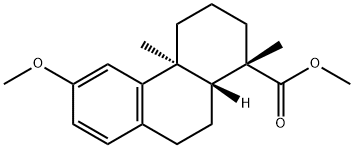
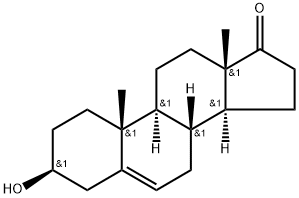
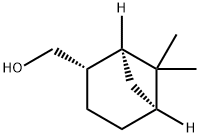


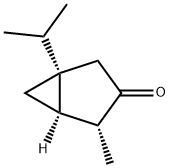
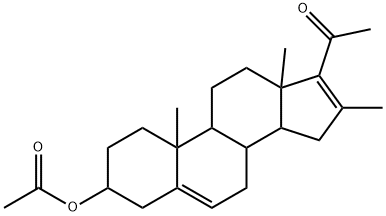
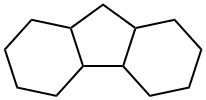
You may like
-
 2,3,4-Trimethylpentane CAS 565-75-3View Details
2,3,4-Trimethylpentane CAS 565-75-3View Details
565-75-3 -
 2,3,4-Trimethylpentane CAS 565-75-3View Details
2,3,4-Trimethylpentane CAS 565-75-3View Details
565-75-3 -
 2,3,4-Trimethylpentane CAS 565-75-3View Details
2,3,4-Trimethylpentane CAS 565-75-3View Details
565-75-3 -
 3-(4-amino-1-oxoisoindolin-2-yl)-1-methylpiperidine-2,6-dione 98%View Details
3-(4-amino-1-oxoisoindolin-2-yl)-1-methylpiperidine-2,6-dione 98%View Details -
 20677-73-0 (2,2-diethoxyethyl)methylamine 98%View Details
20677-73-0 (2,2-diethoxyethyl)methylamine 98%View Details
20677-73-0 -
 3-(4-(hydroxyamino)-1-oxoisoindolin-2-yl)piperidine-2,6-dione 98%View Details
3-(4-(hydroxyamino)-1-oxoisoindolin-2-yl)piperidine-2,6-dione 98%View Details -
 57381-49-4 2-bromo-4-chlorobenzonitrile 98%View Details
57381-49-4 2-bromo-4-chlorobenzonitrile 98%View Details
57381-49-4 -
 4,6-dichloropyrimidine-5-carbaldehyde 98%View Details
4,6-dichloropyrimidine-5-carbaldehyde 98%View Details
5305-40-8
